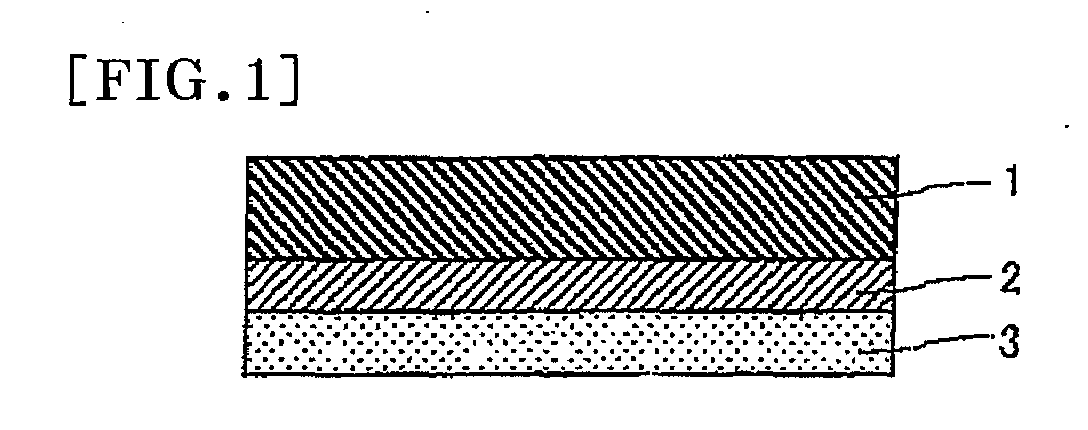Antistatic Adhesive Optical Film and Image Display
an adhesive and optical film technology, applied in the field of antistatic pressure-sensitive adhesive optical film and image display, can solve the problems of affecting the alignment of liquid crystals, causing defects, and destroying circuits
- Summary
- Abstract
- Description
- Claims
- Application Information
AI Technical Summary
Benefits of technology
Problems solved by technology
Method used
Image
Examples
example 1
(Formation of Antistatic Layer)
[0098]An aqueous solution (0.8% of solid content) containing 3 parts of poly(3,4-ethylene dioxythiophene) as a conductive polymer, 100 parts of a polyester resin as a binder component, and 5 parts of polystyrene sulfonic acid was prepared. The aqueous solution concerned was applied to one side of the polarizing plate so that the thickness after drying might give 80 nm, and the applied layer was dried by heating for 2 minutes at 80° C., and an antistatic layer was formed.
(Formation of a Pressure-Sensitive Adhesive Layer)
[0099]An amount of 95 parts of butyl acrylate, 15 parts of N-cyclohexylmaleimide, 5 parts of hydroxyethyl acrylate, and 0.2 parts of benzoyl peroxide were dissolved in 300 parts of toluene as a base polymer, the reaction was continued at about 60° C. for 6 hours under agitation. Thus, a solution (25% of solid content) containing an acryl-based polymer containing nitrogen with a weight average molecular weight of 2 million was prepared. A...
example 2
[0101]Except for having used 5 parts of N-phenylmaleimide instead of N-cyclohexylmaleimide in formation of the pressure-sensitive adhesive layer in Example 1, an antistatic pressure-sensitive adhesive polarizing plate was produced by the same method as in Example 1.
example 3
[0102]Except for having used 25 parts of N-acryloyl morpholine instead of N-cyclohexylmaleimide in formation of the pressure-sensitive adhesive layer of Example 1, an antistatic pressure-sensitive adhesive polarizing plate was produced by the same method as in Example 1.
PUM
| Property | Measurement | Unit |
|---|---|---|
| size | aaaaa | aaaaa |
| temperature | aaaaa | aaaaa |
| thickness | aaaaa | aaaaa |
Abstract
Description
Claims
Application Information
 Login to View More
Login to View More - R&D
- Intellectual Property
- Life Sciences
- Materials
- Tech Scout
- Unparalleled Data Quality
- Higher Quality Content
- 60% Fewer Hallucinations
Browse by: Latest US Patents, China's latest patents, Technical Efficacy Thesaurus, Application Domain, Technology Topic, Popular Technical Reports.
© 2025 PatSnap. All rights reserved.Legal|Privacy policy|Modern Slavery Act Transparency Statement|Sitemap|About US| Contact US: help@patsnap.com


